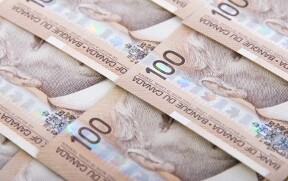
The Canadian dollar is struggling for direction against a plethora of currencies at the end of the trading week as investors balance a slightly better-than-expected gross domestic product (GDP) in August and cratering crude oil prices. The loonie was impacted earlier this week after the central bank forecast that a recovery would not occur until 2022.
According to Statistics Canada, the economy expanded 1.2% in August, down from the 3.1% jump in July. The market had penciled in an expansion of 0.9%. This represented the fourth consecutive monthly GDP gain, driven by a rebound in professional services (2.2%), public sector spending (1.9%), construction activity (1.5%), and manufacturing (1.2%).
In September, producer prices fell both month-over-month and year-over-year. The producer price index (PPI) dipped 0.1% in September, down from the 0.3% boost in August. Raw material prices also tumbled at an annualized rate of 9.4% in September, down from the 7.5% plunge in the previous month.
On Thursday, it was reported that building permits surged 17% in September, up from a tepid 1.4% gain in August. Average weekly earnings climbed 7.9% year-over-year in August, slightly down from the 8.2% increase in July.
The October IHS Markit manufacturing purchasing managers’ index (PMI) will be released on Monday.
Earlier this week, the Bank of Canada (BoC) announced that it would leave its benchmark interest rate at 0.25% for the eighth consecutive month. The central bank reduced its large-scale asset-buying, also known as quantitative easing, by $1 billion to $4 billion per week. The big revelation from the October policy meeting was that officials do not foresee an economic recovery for two more years.
Meanwhile, crashing energy prices weighed on the loonie to close out the trading week. December West Texas Intermediate (WTI) crude oil futures tumbled $0.75, or 2.07%, to $35.42 per barrel on the New York Mercantile Exchange. December natural gas futures were flat at $3.414 per million British thermal units (btu).
Since Canada maintains a current account deficit, it relies heavily on exports to grow the economy. Oil and gas remain the country’s top exports, so any substantial change in prices â high or low â can affect the Great White North and the loonie.
The bond market was green across the board. The benchmark 10-year bond rose 0.019% to 0.651%. The three-year note edged up 0.017% to 0.276%, while the 30-year bond jumped 0.025% to 1.242%.
The USD/CAD currency pair rose 0.09% to 1.3339, from an opening of 1.3328, at 15:37 GMT on Friday. The EUR/CAD inched up 0.06% to 1.5565, from an opening of 1.5556.
If you have any questions, comments, or opinions regarding the Canadian Dollar, feel free to post them using the commentary form below.